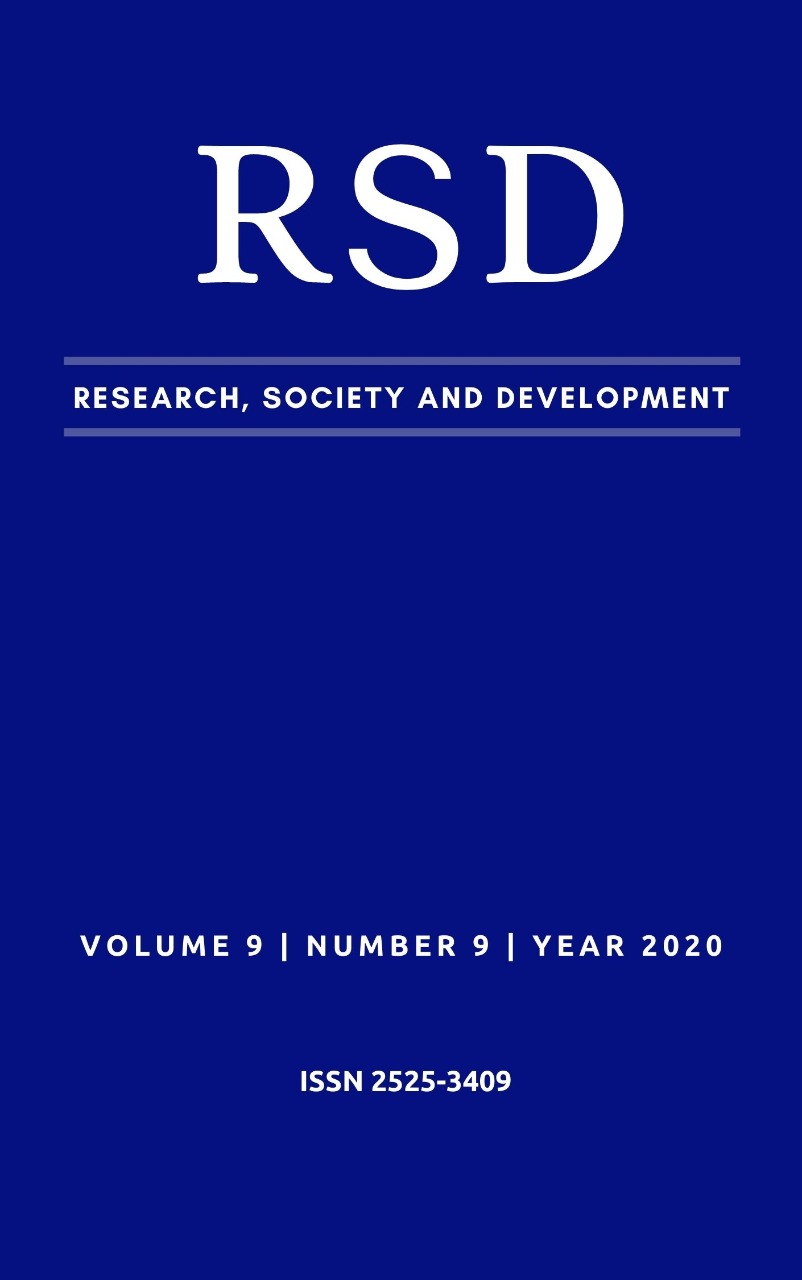Prospección tecnológica de los efectos biológicos de las plantas del género Jatropha
DOI:
https://doi.org/10.33448/rsd-v9i9.6630Palabras clave:
Patentar, Planta medicinal, Prospección científica.Resumen
El género Jatropha, es parte de la familia Euphorbiaceae. Esta familia comprende 290 géneros y aproximadamente 7500 especies, distribuidas en todo el mundo, principalmente en regiones tropicales. Este estudio tuvo como objetivo buscar patentes sobre las principales aplicaciones biológicas del género Jatropha. Para llevar a cabo la investigación, las bases de datos del Instituto Nacional de Propiedad Industrial de Brasil (INPI), la Oficina Europea de Patentes (Espacenet), la Oficina de Patentes y Marcas de los Estados Unidos (USPTO), la Organización Mundial de la Propiedad Intelectual (OMPI) y los descriptores A La base de datos de la OMPI obtuvo el mayor número de patentes (n = 724), predominando la clasificación C12N (n = 153). El número de patentes presentadas en el género de plantas Jatropha puede considerarse alto cuando se investiga en general (n = 1434), sin embargo, cuando se especifican solo los efectos farmacológicos del género, se encuentran pocos depósitos de patentes (n = 38), lo que demuestra la falta de incentivos en el registro de patentes para esta tecnología en el área farmacológica, a pesar de ser un campo de interés comercial, así como una dirección de investigación científica para satisfacer las necesidades reales de la sociedad y el sector económico.
Referencias
Alves, E. O., et al. (2008). Levantamento etnobotânico e caracterização de plantas medicinais em fragmentos florestais de Dourados - MS. Ciência e Agrotecnologia, 32(2), 651-658.
Anaki, K., et al. (2016). Atividades antimicrobiana, anti-inflamatória e antioxidante de Jatropha multifida L (Euphorbiaceae). Pharmacognosy Research, 8 (2), 142.
Hirota, B. C. K. (2011). Estudo fitoquímico e das propriedades biológicas de Jatropha multifida L. (Euphorbiaceae). (Dissertação de Mestrado). Programa de Pós-Graduação em Ciências Farmacêuticas da Universidade Federal do Paraná, Curitiba, PR, Brasil.
Mayerhoff, Z. D. V. L. (2008). Uma análise sobre os estudos de prospecção tecnológica. Cadernos de prospecção, 1(1), 7-9.
Moreno, A. R., et al. (2016). Determinación de los compuestos polifenólicos en extractos de Jatropha dioica y su capacidad antioxidante. Revista Mexicana de Ciencias Farmacéuticas, 47(4), 42-48.
Papalia, T., Barreca, D., & Panuccio, M. R. (2017). Assessment of antioxidant and cytoprotective potential of Jatropha (Jatropha curcas) grown in Southern Italy. International Journal of Molecular Sciences, 18(3), 660.
Patel, N. F., et al. (2018). Prospecção Tecnológica sobre Atividades Biológicas e Processos Tecnológicos do Gênero Baccharis com Base no Depósito de Patentes. Cadernos de Prospecção, 11(2), 628.
Prakoso, T., et al. (2019). Oxidation stability of biodiesel fuel produced from Jatropha Curcas L. using Rancimat and PetroOXY method. Energy Sources, Part A: Recovery, Utilization, and Environmental Effects, 41(4), 501-506.
Rampadarath, S., Puchooa, D., & Ranghoo-Sanmukhiya, V. M. (2014). Antimicrobial, phytochemical and larvicidal properties of Jatropha multifida Linn. Asian Pacific Journal of Tropical Medicine, 7, 380-383.
Rocha, C. A. M., et al. (2020). Prospecção Científica e Tecnológica do Ácido Caurenóico, um Diterpeno Bioativo. Cadernos de Prospecção, 13 (1), 256.
Rocha Neto, J. T., et al. (2011). Toxicidade de flores de Jatropha gossypiifolia L. à abelha africanizada em condições controladas. Revista Verde de Agroecologia e Desenvolvimento Sustentável, 6 (2), 16.
Santos, F. C. G., & Araújo Kalid, R. (2020). Prospecção tecnológica: um estudo das tecnologias aplicada ao beneficiamento e derivados do cacau. Research, Society and Development, 9(3), 24. doi:http://dx.doi.org/10.33448/rsd-v9i3.2354.
Santos, W. L. C., et al. (2008). Atividades farmacológicas e toxicológicas da Jatropha curcas (pinhão-manso). Rev. Bras. Farm, 89(4), 333-336.
Silva, M. N., & Gusmão, C. L. S. (2013) Citogenética do Gênero Jatropha L.: Revisão de Literatura. Recuperado de http://www.eventosufrpe.com.br/2013/cd/resumos/R0451-1.pdf.
Descargas
Publicado
Número
Sección
Licencia
Derechos de autor 2020 José Lima Pereira Filho, Pedro da Silva Gerônimo Neto, João Marcelo Saraiva Ferreira, Pablo de Matos Monteiro, Aglaete de Araújo Pinheiro, Carla Daniele Pinheiro Rodrigues, Crisálida Machado Vilanova

Esta obra está bajo una licencia internacional Creative Commons Atribución 4.0.
Los autores que publican en esta revista concuerdan con los siguientes términos:
1) Los autores mantienen los derechos de autor y conceden a la revista el derecho de primera publicación, con el trabajo simultáneamente licenciado bajo la Licencia Creative Commons Attribution que permite el compartir el trabajo con reconocimiento de la autoría y publicación inicial en esta revista.
2) Los autores tienen autorización para asumir contratos adicionales por separado, para distribución no exclusiva de la versión del trabajo publicada en esta revista (por ejemplo, publicar en repositorio institucional o como capítulo de libro), con reconocimiento de autoría y publicación inicial en esta revista.
3) Los autores tienen permiso y son estimulados a publicar y distribuir su trabajo en línea (por ejemplo, en repositorios institucionales o en su página personal) a cualquier punto antes o durante el proceso editorial, ya que esto puede generar cambios productivos, así como aumentar el impacto y la cita del trabajo publicado.


